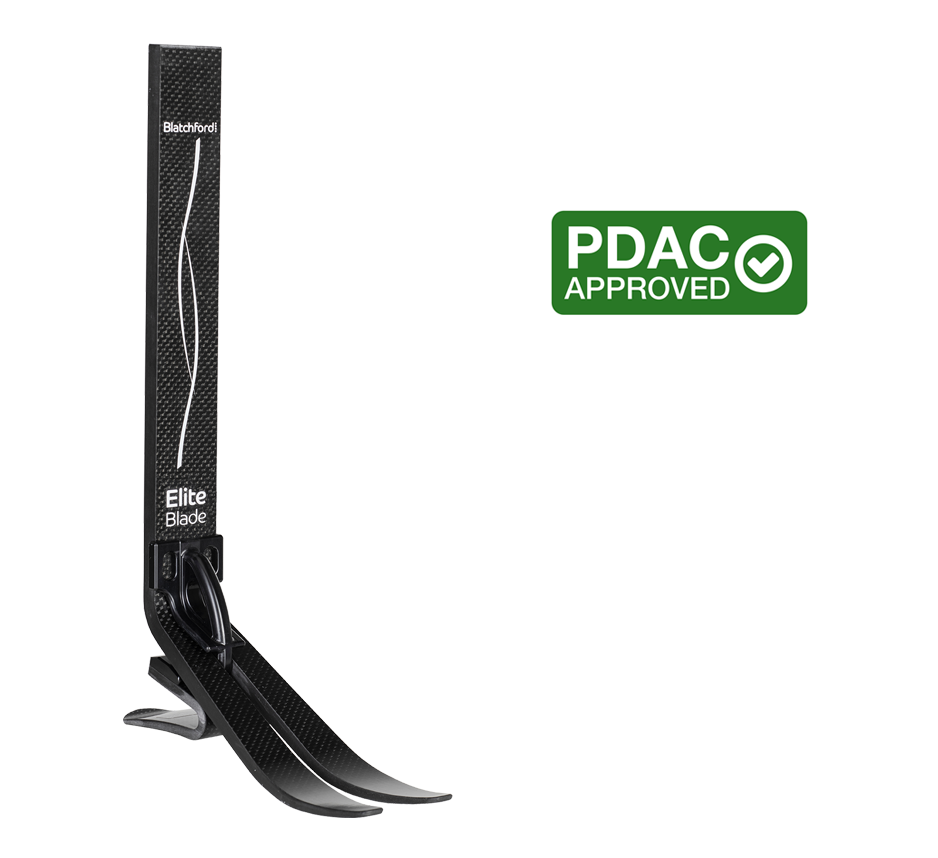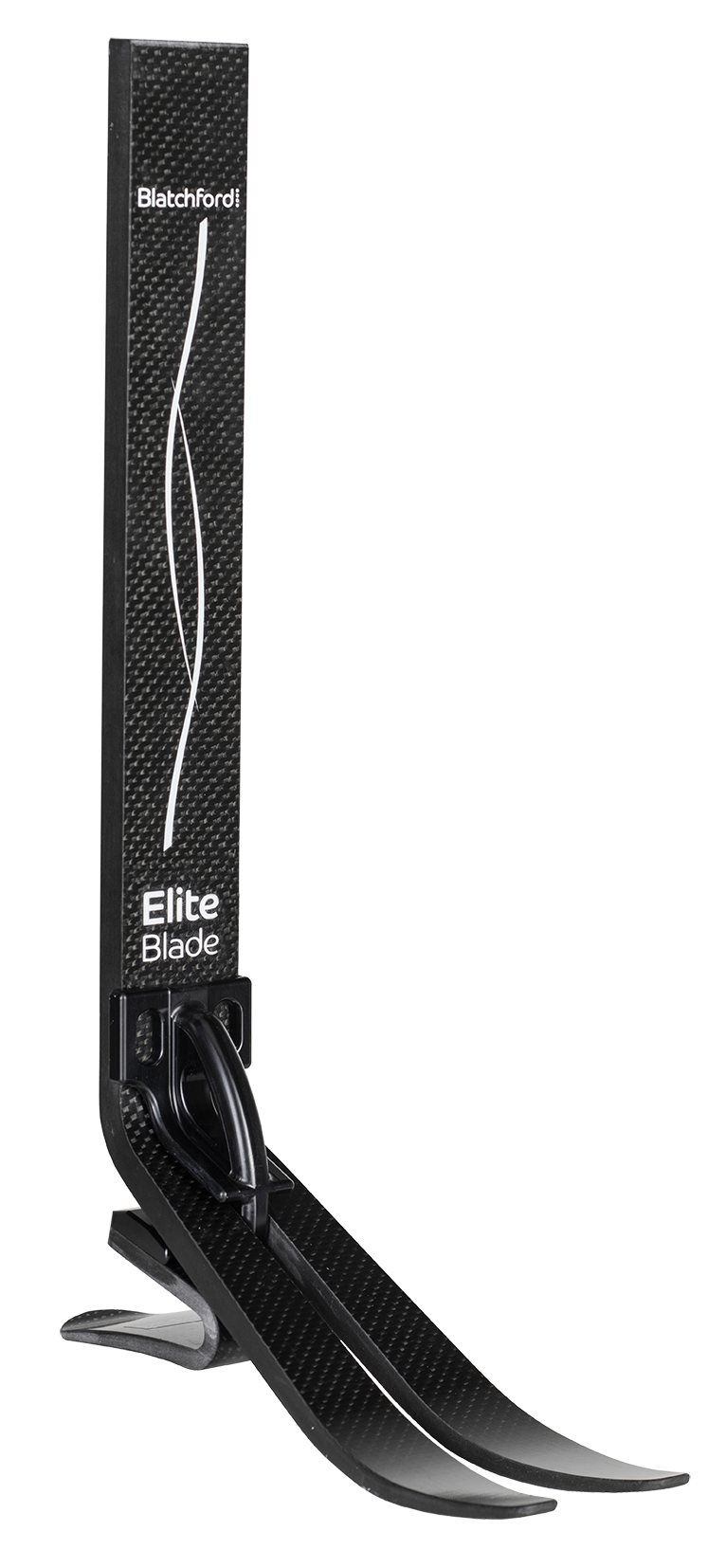Elite Blade
A lightweight, high energy return prosthetic foot, the elite blade is ideal for Level 3-4, high impact use from the casual jogger to the serious runner. The flexible extended pylon reduces shock load transmission making it a great crossover foot for work, leisure and sports activities.
- Activity level 3
- Activity level 4
- Submersion to a depth of 1m
Elite Blade Clinical Evidence Reference
Clinical Outcomes using e-carbon feet
-
Safety
- High mean radius of curvature for Esprit-style e-carbon feet2: “The larger the radius of curvature, the more stable is the foot”
-
Mobility
- Allow variable running speeds3
- Increased self-selected walking speed4
- Elite-style e-carbon feet (L code VL5987) or VT units demonstrate the second highest mobility levels, behind only microprocessor feet5
-
Loading symmetry
- Users demonstrate confidence in prosthetic loading during high activity6
- Improved prosthetic push-off work compared to SACH feet7
- Increased prosthetic positive work done4
-
User satisfaction
- High degree of user satisfaction, particularly with high activity users8
References
-
Full Reference Listing
-
Crimin A, McGarry A, Harris EJ, et al.
The effect that energy storage and return feet have on the propulsion of the body: A pilot study. Proc Inst Mech Eng [H] 2014; 228: 908–915.
-
Curtze C, Hof AL, van Keeken HG, et al.
Comparative roll-over analysis of prosthetic feet. J Biomech 2009; 42: 1746–1753.
-
Strike SC, Arcone D, Orendurff M.
Running at submaximal speeds, the role of the intact and prosthetic limbs for trans-tibial amputees. Gait Posture 2018; 62: 327–332.
-
Ray SF, Wurdeman SR, Takahashi KZ.
Prosthetic energy return during walking increases after 3 weeks of adaptation to a new device. J Neuroengineering Rehabil 2018; 15: 6.
-
Wurdeman SR, Stevens PM, Campbell JH.
Mobility analysis of AmpuTees (MAAT 5): Impact of five common prosthetic ankle-foot categories for individuals with diabetic/dysvascular amputation. J Rehabil Assist Technol Eng 2019; 6: 2055668318820784.
-
Haber CK, Ritchie LJ, Strike SC.
Dynamic elastic response prostheses alter approach angles and ground reaction forces but not leg stiffness during a start-stop task. Hum Mov Sci 2018; 58: 337–346.
-
Rock CG, Wurdeman SR, Stergiou N, Takahashi KZ.
Stride-to-stride fluctuations in transtibial amputees are not affected by changes in push-off mechanics from using different prostheses. PloS one. 2018;13(10).
-
Highsmith MJ, Kahle JT, Miro RM, et al.
Differences in Military Obstacle Course Performance Between Three Energy-Storing and Shock-Adapting Prosthetic Feet in High-Functioning Transtibial Amputees: A Double-Blind, Randomized Control Trial. Mil Med 2016; 181: 45–54.
-
Elite Blade Documentation
-
Product Information
-
Elite Blade Brochure
-
-
Other downloads
-
Elite Blade - 938179 Proximal Pyramid Adapter Kit Iss14
-
Elite Blade - 938307 Iss3
-
Elite Blade - 938313 Iss7
-
Elite Blade - 938314 VT Cutting and Drilling Jig Iss3
-
Elite Blade - 938360 Foot Shell Cover Iss5
-
Elite Blade PDAC Verification Letter
Suggested L-Codes: L5980 -
Blatchford Product L Codes January 2024
-
The PDAC-Approved badge denotes a product that has been approved by the Pricing, Data Analysis and Coding (PDAC) contractor for one or more of the prior authorization codes as specified in the Healthcare Common Procedure Coding System (HCPCS) codes.



